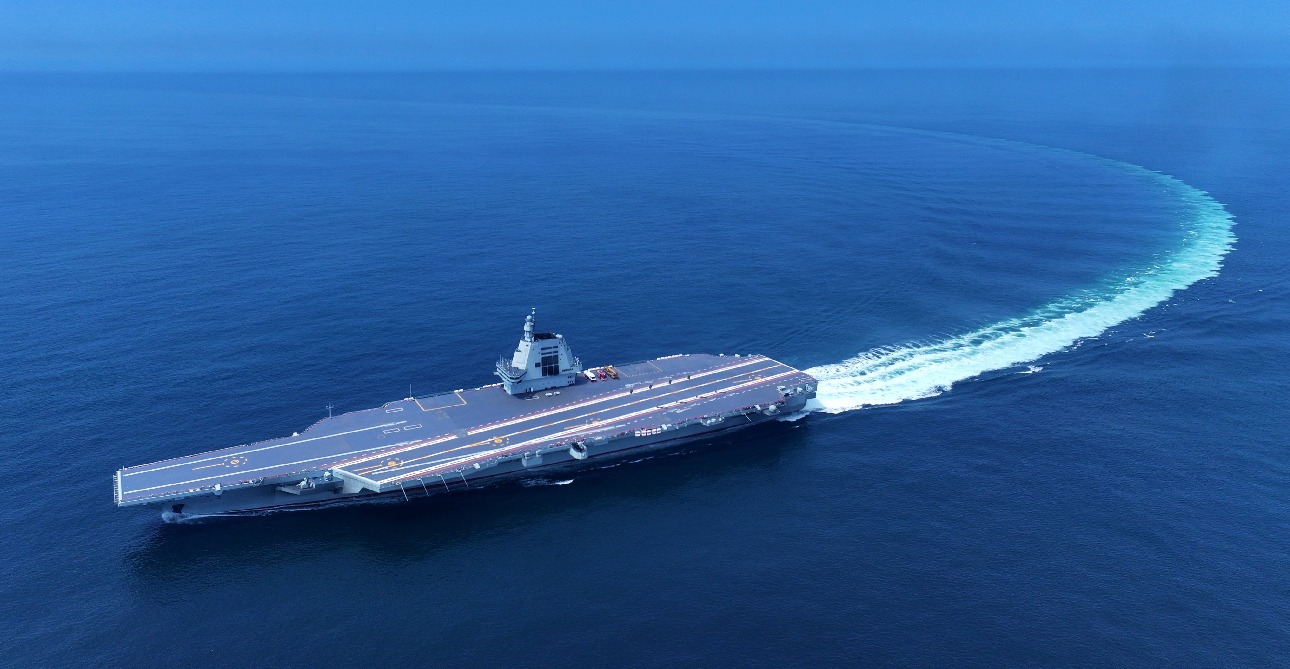After allegations of US military snooping on China’s Fujian aircraft carrier, now there are claims that Russia could be gathering critical intelligence on Israel’s newest submarine, INS Drakon.
H.I. Sutton alleged that two Russian spy ships—the Sibiryakov and Wassili Tatischtschew—were likely gathering information about Israel’s newest submarine.
The submarine, constructed in Kiel by ThyssenKrupp Marine Systems (TKMS), is undergoing sea trials. The report cited a detailed analysis of Sibiryakov‘s movements by naval analyst Droxford Maritime, which suggested that the vessel had been dispatched to snoop on Israel’s new submarine. In addition, German media reported that the Russian Navy intelligence ship Wassili Tatischtschew had positioned itself off Kiel.
Russia has often been accused of dispatching its spy ships to gather crucial information on adversaries. For instance, Russia was accused of using a spy ship in Nordic waters in April last year as part of a mission to potentially sabotage underwater cables and wind farms in the region.
Since 2014, there have been allegations of Russian ships eavesdropping on North Sea facilities. At least 50 Russian ships, purportedly civilian and fishing vessels, were discovered to have hung about power facilities, oil and gas sites, and military training grounds during NATO training exercises, according to a prior investigation by public media in Denmark, Finland, Sweden, and Norway.

Earlier this year, a Russian spy ship lingered near the Japanese coastline during what was believed to be a targeted deployment that lasted for 10 days. At that time, the ship in question was Kareliya, a Project 864 or Vishnya-class signals intelligence-gathering warship in the service of the Russian Pacific fleet.
Spying on a new vessel heading for sea trials is not uncommon. Sutton explained in his report, “Sea trials are an incredibly sensitive time for new submarines. Particularly for first-in-class boats or exotic types. It exposes them to unwanted attention from other navies who might want to build an acoustic library of what the new submarine sounds like. Or monitor the performance of new weapons or systems. Gathering this data during sea trials is generally easier than waiting until it is in service.”
Research vessel activity – Analysis
Russian OIS Sibiryakov intelligence operations in the Skagerrak, 16 June 2024.
May have conducted ACINT against Israel's newest submarine INS DRAKON.https://t.co/EGFrDul73c pic.twitter.com/kqnw3ahC09
— Droxford Maritime (@Drox_Maritime) June 24, 2024
INS Drakon is the latest and most advanced of Israel’s Dolphin II class attack submarines. The sub is distinguished by its remarkably huge sail, probably used to hold vertical launch tubes for upcoming strategic missiles. When the submarine is put into service, it will eventually become part of Israel’s nuclear deterrent, which is why it is so much in demand when conducting sea trials.
According to experts, the marine pathways are closed off to the public and are not accessible, which makes the claims about the Russian Navy’s snooping efforts even more significant. Droxford Maritime pointed out that the Israeli submarine’s movements have not been reported. However, the submarine was observed being fueled in early June, so it is expected to be in trials.
EurAsian Times could not independently confirm these claims. However, China made a similar accusation against the United States this year when it alleged that the US military was trying to collect information about its newest aircraft carrier, the Fujian.
China Accused US Of Spying On Fujian
In May 2024, reports suggested that a United States Air Force electronic intelligence aircraft was conducting surveillance missions along the Chinese coastline.
Flight-tracking information provided by Hans M. Kristensen, Director of the Nuclear Information Project of the Federation of American Scientists, showed the movements of the US spy plane — registered with serial number 6414847— as it swept over China’s strategically important coastal regions.
These operations took place on May 7, 9, 10, and 13 from the Japanese island of Okinawa’s Kadena Air Base. According to Kristensen, the RC-135U Combat Sent conducted several long-haul flights, with its paths changing often.
Over the past week, RC-135U Combat Sent (6414847) has been doing sweeps along Chinese coastline: 3 northeast and 1 south.
It collects electronic data to locate/identify radar signals to determine detailed operating characteristics and capabilities. https://t.co/Hu6haF0dtq pic.twitter.com/bcybR0hopZ
— Hans Kristensen (@nukestrat) May 13, 2024
The aircraft flew for eight hours on May 7, crossing the Luzon Strait to the north of the Philippines. It then circled the South China Sea’s China-controlled Paracel Islands and stayed in the Pearl River Delta.
Subsequent flights on May 9 and 10, each lasting six hours, saw the plane fly north through the East China Sea to reach the Yellow Sea off northeastern China.

The areas scanned by the RC-135U Combat Sent on May 9, 10, and 13 were near Shanghai, where China’s maritime safety authority had declared a no-go zone for the aircraft carrier Fujian’s sea trials from May 1 to 9.
The US Defense Department did not disclose the specific nature of these operations. However, these surveillance sorties suggested that the USAF was attempting to gather intelligence on the Chinese carrier amid escalating tensions between China and the West.
- Contact the author at sakshi.tiwari9555 (at) gmail.com
- Follow EurAsian Times on Google News





